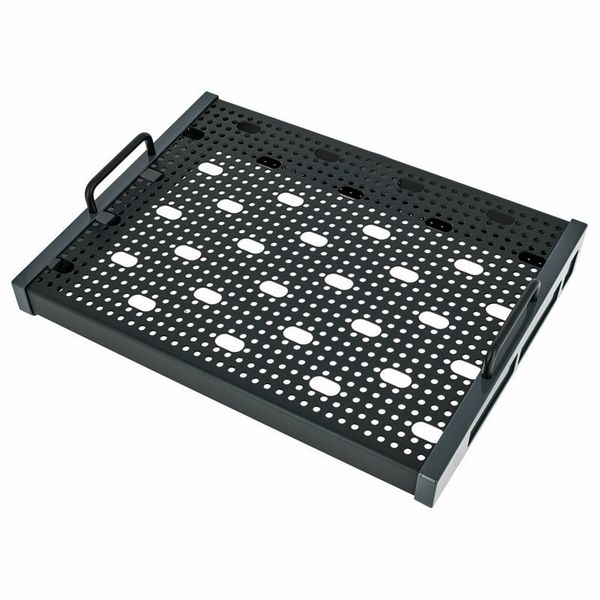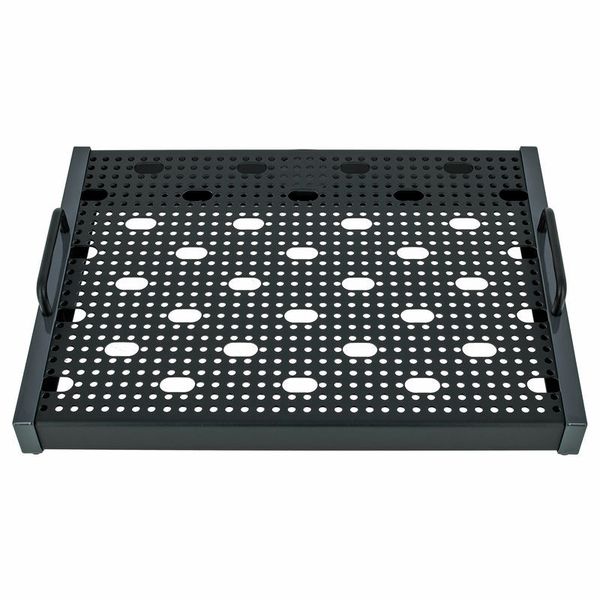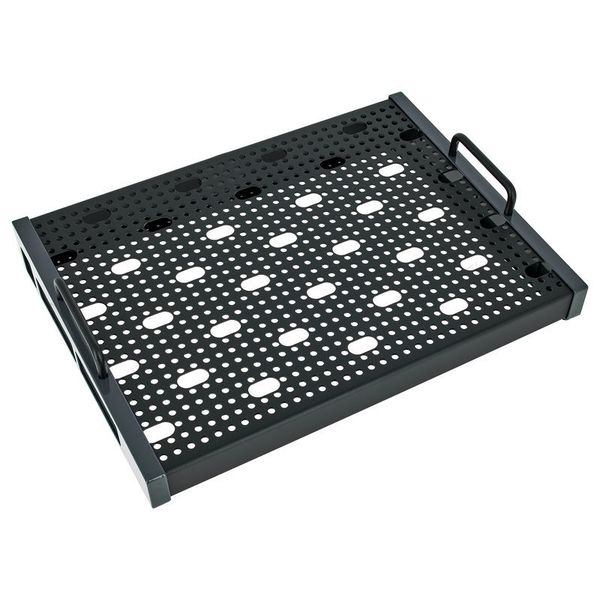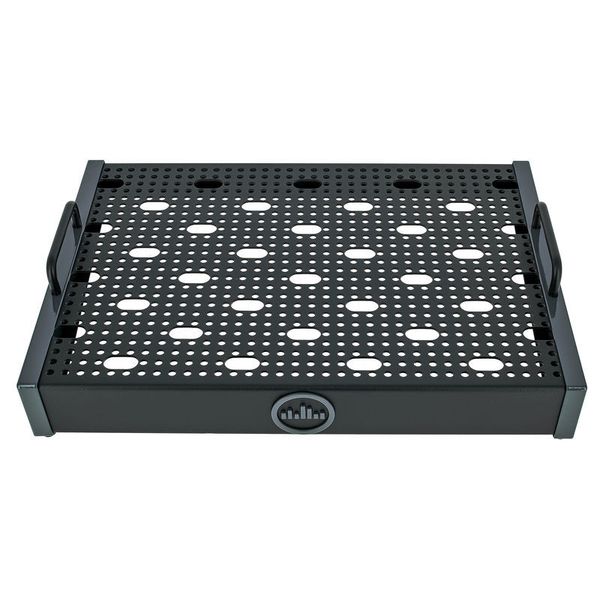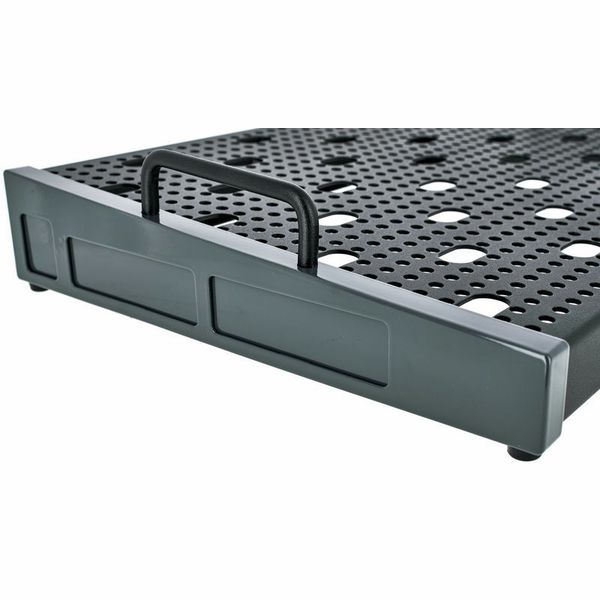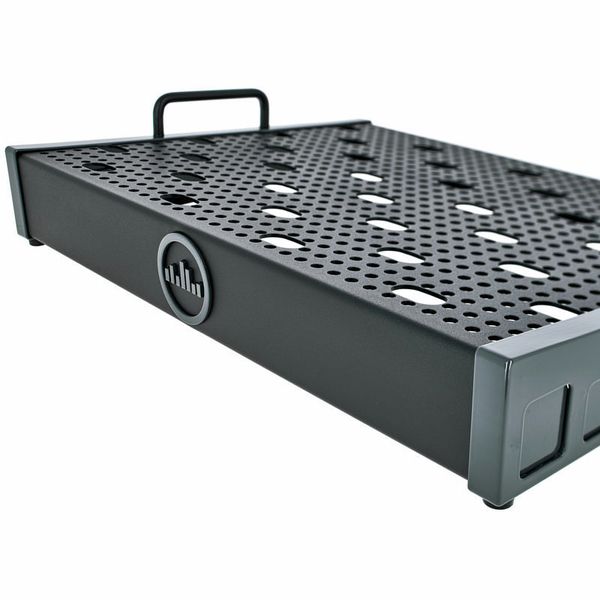After extended use, I can say that Temple Audio boards have many strengths, but also some points that deserve attention.
On the positive side, they offer excellent modularity: there is a wide variety of MODs available, and the number of perforations on the structure makes it easy to use zip ties and to organize cables underneath. This results in a clean, functional, and aesthetically pleasing setup. Another strong point is the weight: these boards are lightweight, sturdy, and visually well-finished, which makes a big difference when transporting them. In addition, the internal space allows you to install power supplies and even utility pedals underneath, something highly praised by the community.
However, there are also some notable drawbacks. The plate system is not as practical as it seems: it requires gluing plates onto pedals, which often leaves difficult-to-remove residue and also reduces the usable space on the board. Rearranging the setup can also be a hassle, since the plates don’t really make swapping pedals easier. For this reason, many users (myself included) prefer using zip ties, industrial Velcro, or Dual Lock, which provide solid fixation without the inconveniences of plates.
Another issue is the price of the MODs: while they work well and make the board more complete, they are expensive compared to alternative solutions. In addition, some users report that larger boards can flex slightly, which may be problematic if you’re using expression pedals or rigid cables. Others also note that the oval cutouts are too small for thicker cables, such as certain MIDI cables.
Conclusion
Temple Audio delivers a quality product that is lightweight and modular, allowing you to build an organized and elegant setup. However, the plate system and the high cost of MODs can limit the experience. If you opt for alternatives like Dual Lock or zip ties, you can get much more out of the board. Still, it’s a solid choice for those who value portability and customization—just be aware of its limitations.


